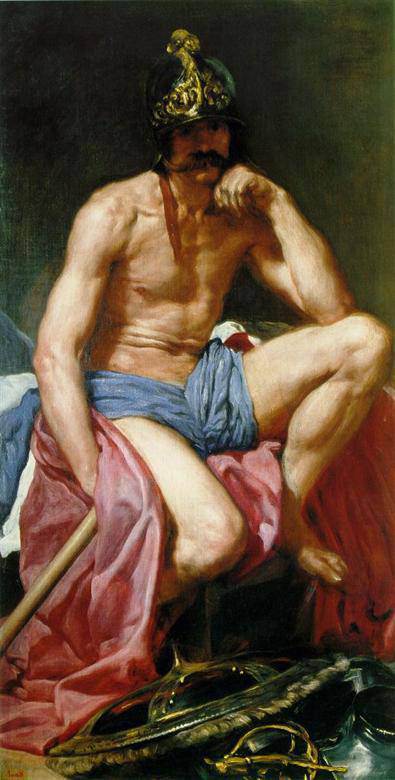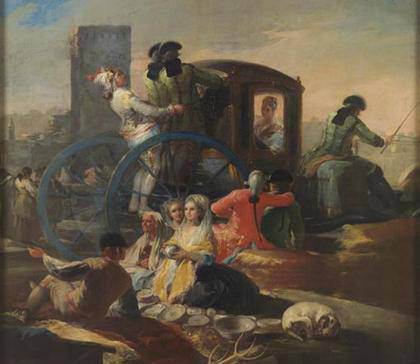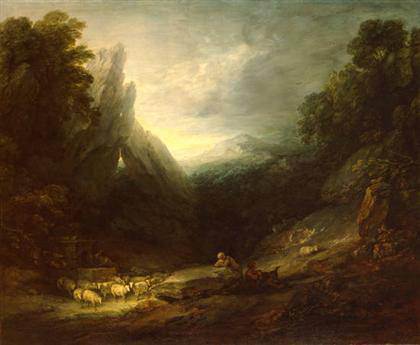
Diego Velázquez
Mars, c. 1638
oil on canvas
Museo Nacional del Prado, Madrid.

Francisco de Goya
The Crockery Vendor (detail), 1778–79
oil on canvas
Museo Nacional del Prado, Madrid.
Masterpieces from the Prado at the MFAH, Houston ‘Portrait of Spain: Masterpieces from the Prado’: Spain’s Cultural treasures on exclusive U.S. Tour from the Prado, Madrid, to the Museum of Fine Arts, Houston. From December 16, 2012, through March 31, 2013.]]>
Source: Museum of Fine Arts, Houston
Portrait of Spain, exhibited in the second-floor galleries of the Audrey Jones Beck Building at the MFAH, will be installed according to themes within three distinct eras of Spanish history: 1550 to 1770; 1770 to 1850; and 1850 to 1900. Masterpieces by the leading painters of the day from each of the four centuries include works by Francisco de Goya, El Greco, Bartolomé Esteban Murillo, Jusepe de Ribera and Diego Velázquez. Artists who worked for the royal court and directly influenced the development of painting in Spain are also well represented, with superb paintings by Peter Paul Rubens, Giovanni Domenico Tiepolo and Titian.
1) “1550–1770: Painting in an Absolutist State”
Outstanding portraits, mythological scenes, devotional paintings and still lifes by artists including El Greco, Diego Velázquez and Francisco de Zurbarán exemplify the splendor of Spain’s Golden Age, when the empire was at the zenith of its global power, and offer a glimpse of courtly life under the expansionist Habsburg (1516–1700) and later the Bourbon (1700–1808) monarchs, who ushered in the Enlightenment to Spain. The use of portraiture and mythological themes as expressions of royal power; the role of religious imagery in painting; and the symbolism employed in still-life imagery to espouse the virtues of a civil society all factor in the development of Spanish painting during this time.
2) “1770–1850: A Changing World”
Against the tumultuous backdrop of the French Revolution; the Napoleonic Wars and France’s invasion of Spain; and the onset of a series of devastating civil wars, Spanish artists in the late 18th and early 19th centuries turned to chronicling a variety of levels of Spanish society. Preeminent among the artists during this unpredictable time was Francisco de Goya, who was painter to the courts of Charles IV and Charles V and who later in life graphically depicted the casualties of war and madness. In this exhibition, Goya’s work is represented by major Neoclassical portraits, including those of Manuel Silvela and the Marquesa de Villafranca, and an important selection of prints from the artist’s three extraordinary series: Los Caprichos, Los Disparates and Los Desastres de la Guerra (The Disasters of War).
3) “1850–1900: The Threshold of Modern Spain”
Following the civil wars, the emergence of a fledgling Spanish national identity in the mid-19th century was supported by a period of relative economic prosperity. A move toward Romanticism brought with it a focus on genres that reflected the ideals of middle-class taste of the period, including landscapes, portraits, historical and religious scenes and nudes. Featured in this section are the works of Federico de Madrazo, known for his history painting and his portraits (and as a onetime director of the Prado); Eduardo Rosales, who looked back to Diego Velázquez in pursuit of a new Realism in Spanish painting; Mariano Fortuny, whose fascination with Orientalist themes reflected his exotic travels and international career; Aureliano de Beruete, one of the earliest Spanish painters to identify with the Impressionist movement; and Joaquín Sorolla, whose Realist paintings depicting the lives of fishermen and farmers explored the effects of sunlight and shadow and pushed Spanish painting toward the threshold of modernity.
Related content
Titian and the golden age of Venetian Painting in Houston (exhibition, 2011)
Follow us on:

